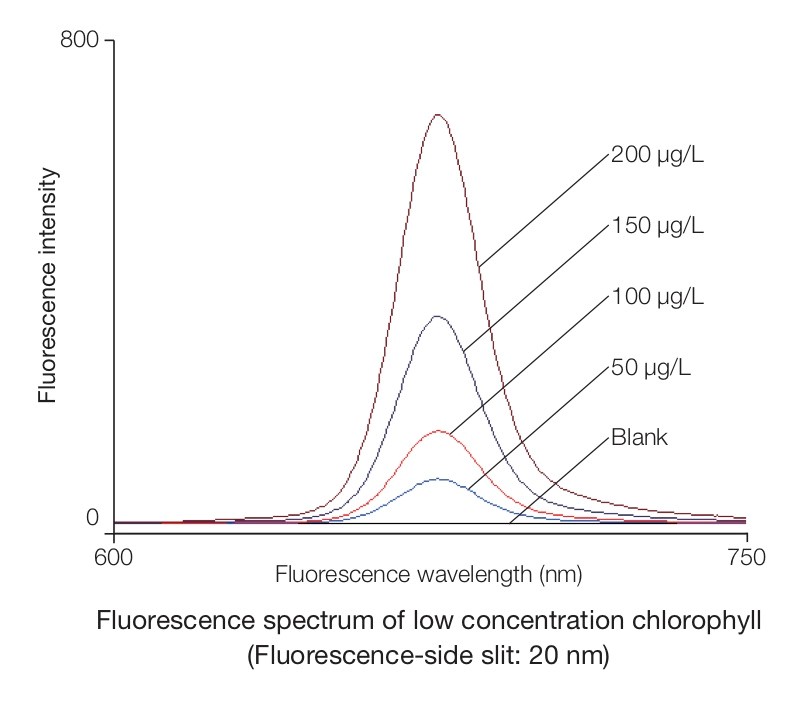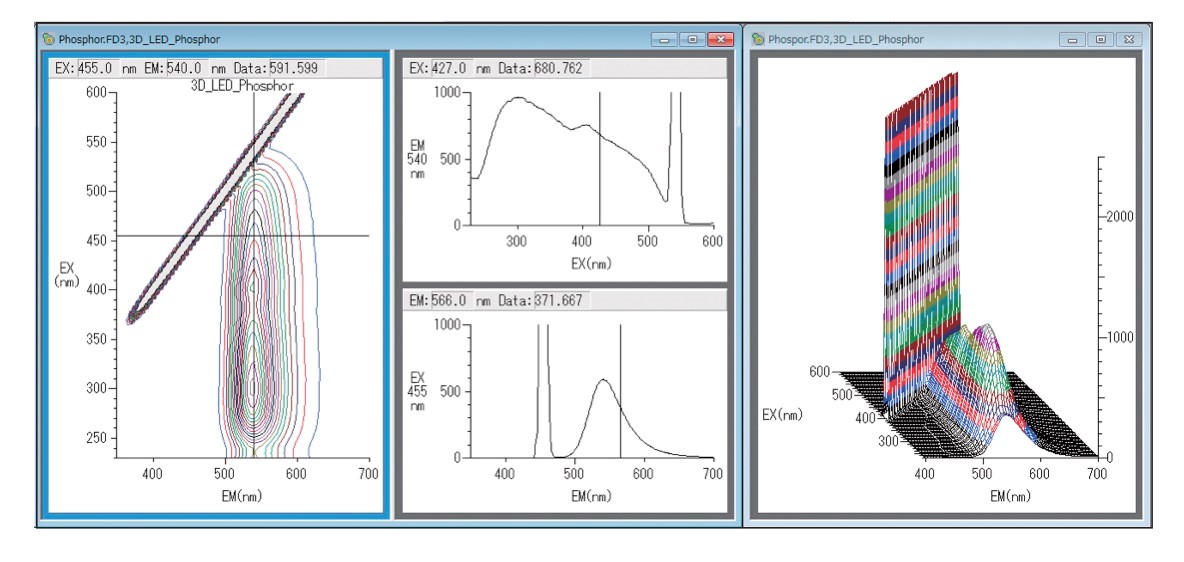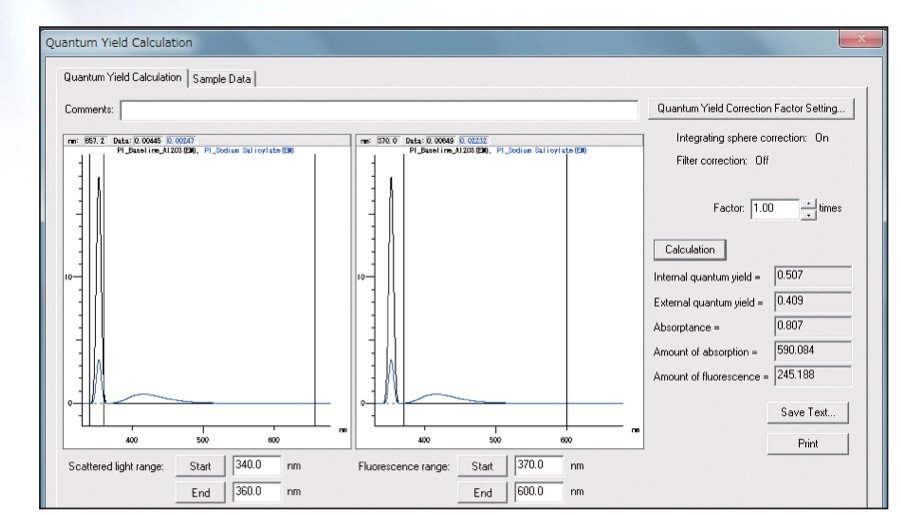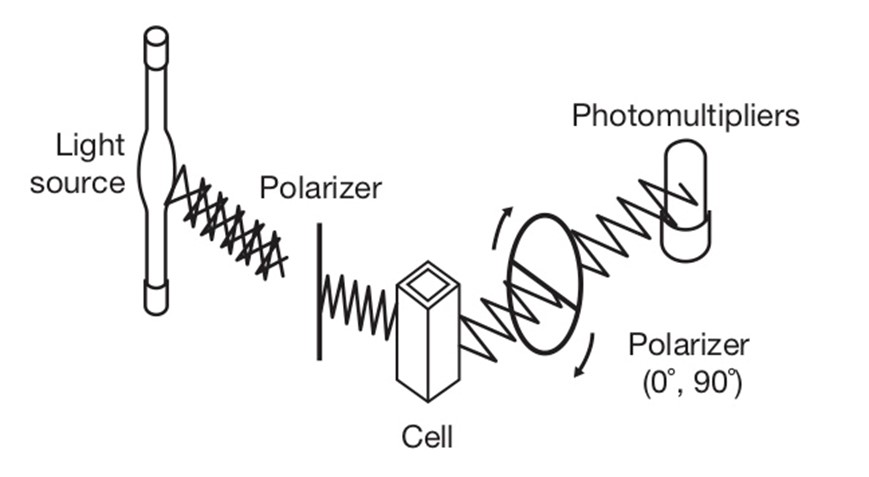
Extensive range of applications for fluorescence spectrophotometry
Fluorescence spectrophotometry has an important role to play in industry, universities and other research organisations. It has applications in the Food, Beverage, Materials, Chemicals, Bio-Tech, Pharmaceutical, Energy and Environment sectors. It is used for the measurements on fluorescent materials that are widely found in many every day products ranging from displays used in TVs, mobile phones and tablets to paint, detergents, clothes, papers, lights, signs and banknotes. Other applications in biomedical and biochemical research, cancer research and pharmaceutical and healthcare include the study of proteins and enzymes, intracellular cation concentrations in the regulation of cell metabolism, and kinetics.
High performance measurements
Fluorescence spectrophotometry is particularly powerful since its high sensitivity enables extremely low analyte concentrations to be measured.

Solid or liquid samples can be measured with virtually no sample preparation. In addition to providing information as a function of excitation or emission wavelengths, time scanning is available to enable kinetic studies to be made of fast reactions. Thanks to the availability of fast scanning fluorescence spectrophotometers optimized for high sensitivity, traditional qualitative and quantitative analysis can be supplemented by specialized measurement techniques such as fluorescence fingerprinting, quantum yield measurements and fluorescence polarization.
Quantitative analysis
Quantitative measurements of individual fluorescent materials can be made down to very low levels, depending on the particular instrument used. For example the Hitachi F7100 fluorescence spectrophotometer can measure fluorescein down to 1.0 x 10-13 mol/L. Intracellular cations such as H+, K+, Na+ and Ca2+ play a significant role in the regulation of cell metabolism. The simultaneous measurement of the concentration of two cations, such as Ca2+ and H+ (pH) is possible using commercially available specific fluorescence probes and allows their direct relationship to be studied.

In kinetics studies, reactions such as the biosynthesis of proteins, and the movement of ions across membranes can be measured.
Fluorescence fingerprinting (Excitation Emission Matrix)
A fluorescence 'fingerprint', specific to individual materials, is obtained by plotting the intensity of the fluorescent light and the excitation and emission wavelengths in three dimensions as a 'bird's eye' view or contour map.

This is also known as the Excitation Emission Matrix (EEM) method. The contour lines represent regions of the same fluorescence intensity. Using multivariate software for 3D scan analysis, fluorescence fingerprints from known samples can be collected and processed to create 'identification models' of much fewer variables which are held in a reference library. Fluorescence fingerprints of unknown samples are then acquired in the same way and compared to the references to complete the analysis. Information extracted from the 3D fingerprints, such as composition, concentration and environmental load, can be used to reveal purity, abnormalities in raw materials, mixture compositions, freshness due to organic degradation, or determine the place of origin and more. You can find out more about this versatile technique in our blog entitled: 'Fluorescence fingerprinting using the Excitation Emission Matrix (EEM)'.
Quantum yield
Fluorescence quantum yield measurements are performed to evaluate the emission efficiency of organic EL materials, and fluorescent substances for white LEDs, quantum dots, fluorescence probes, etc. Quantum yield measurements for solids are made using the absolute method where the number of photons absorbed by the sample the number of photons subsequently emitted from it are measured.

Results of the fluorescent quantum yield measurement of sodium salicylate
Liquid sample quantum yield measurements are made using the relative method by measuring the fluorescence intensity and comparing it to a reference sample of known quantum yield.
Fluorescence polarization
Fluorescence polarization involves using a polarized light source and measuring the change in polarization angle in the emitted fluorescence.

The method is simple, quick, and highly sensitive; therefore, it has been implemented for several practical applications, including quantitative determination of drug concentrations in blood and measurements of antigen-antibody reaction or enzyme activity using specialized instruments.
Fluorescence spectrophotometers from Lambda Advanced Technology
Lambda Advanced Technology is one of the industry-leading suppliers of analytical instruments for a wide range of applications, including some of the best-in-class fluorescence spectrophotometers on the market. If you would like more information, simply contact a member of the team today.